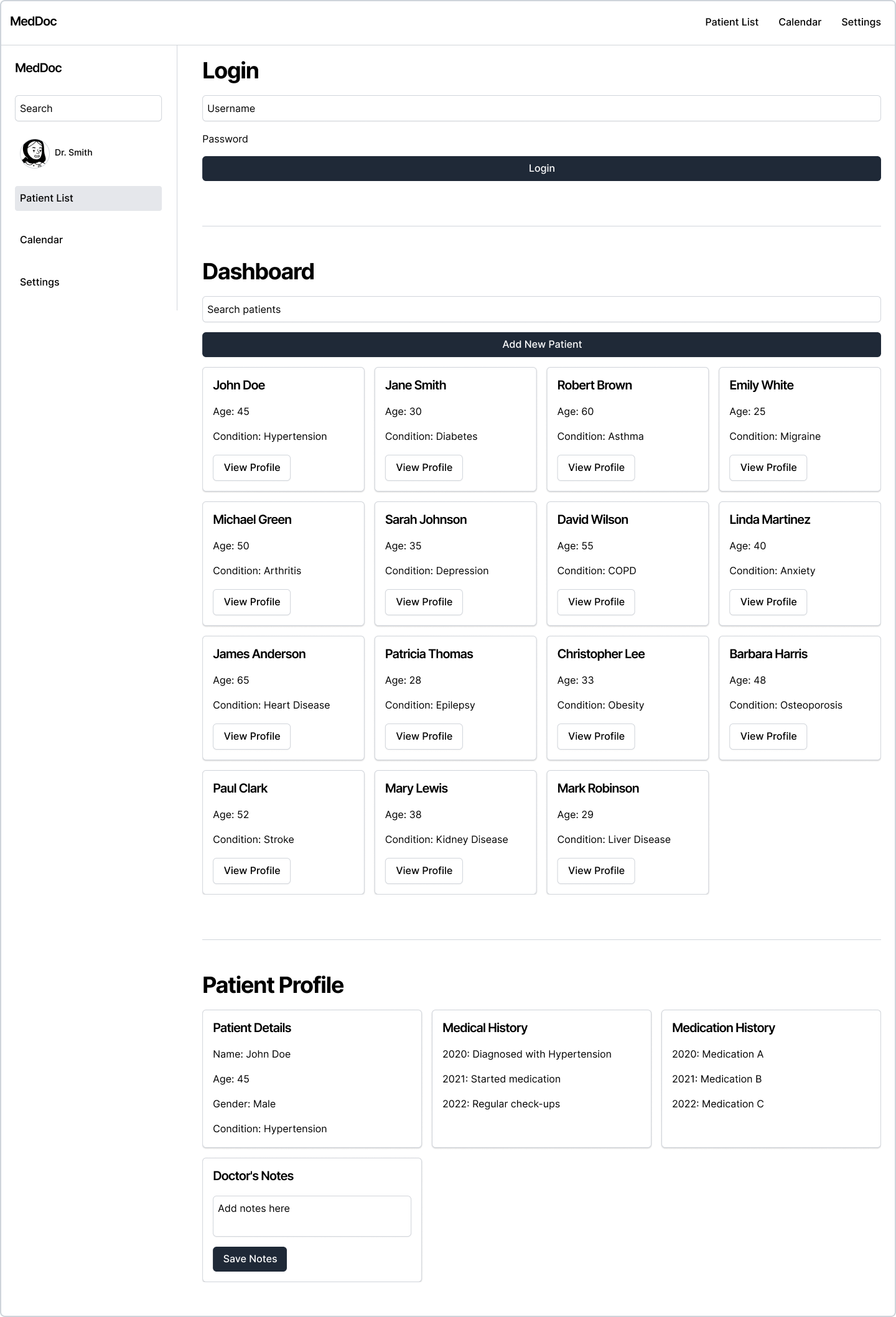MedDoc is a software designed to help doctors in hospital clinics efficiently document patient medical history and access it anytime.
Problem
The main problem we are trying to solve with MedDoc is the inefficiency and frustration doctors experience when documenting and accessing patient medical history in hospital clinics.
current pain points:
Time-consuming documentation: Current systems might be cumbersome and require excessive typing, slowing doctors down.
Inaccuracy: Manual data entry can lead to errors in patient records.
Poor accessibility: Existing interfaces are cluttered or lack intuitive features, making it difficult for doctors to quickly find the information they need.
Limited collaboration: Sharing patient data between doctors is difficult and require switching between different systems.
MedDoc aims to address these issues by providing a user-friendly and efficient solution that allows doctors to:
- Document patient information quickly and accurately.
- Access patient medical history seamlessly.
- Improve collaboration and communication with colleagues.
Ultimately, by streamlining these processes, MedDoc can help doctors focus on what matters most - delivering quality patient care.
User research
interviewing 10 doctors from different divisions to understand their current experience and pain points
Information Architecture



User Flow


Key UX Considerations
Efficiency: MedDoc should prioritize streamlining the process of documenting and accessing patient medical history. This includes features like quick access to frequently used templates, pre-populated fields, and voice dictation capabilities.
Accuracy: The system should have functionalities to minimize errors, such as auto-complete features for medications and standardized drop-down menus for diagnoses.
Accessibility: The interface should be accessible to doctors with different levels of technical expertise and cater to various needs, such as compatibility with screen readers.
Security: MedDoc should prioritize robust security measures to ensure patient data privacy and comply with HIPAA regulations. This might involve features like two-factor authentication and secure data encryption.
Additional Features to Consider:
Integration with existing hospital systems for seamless data transfer.
Real-time collaboration features for doctors to share patient information securely.
Clinical decision support tools to aid doctors in diagnosis and treatment planning.
Reporting and analytics functionalities to track patient health trends.










